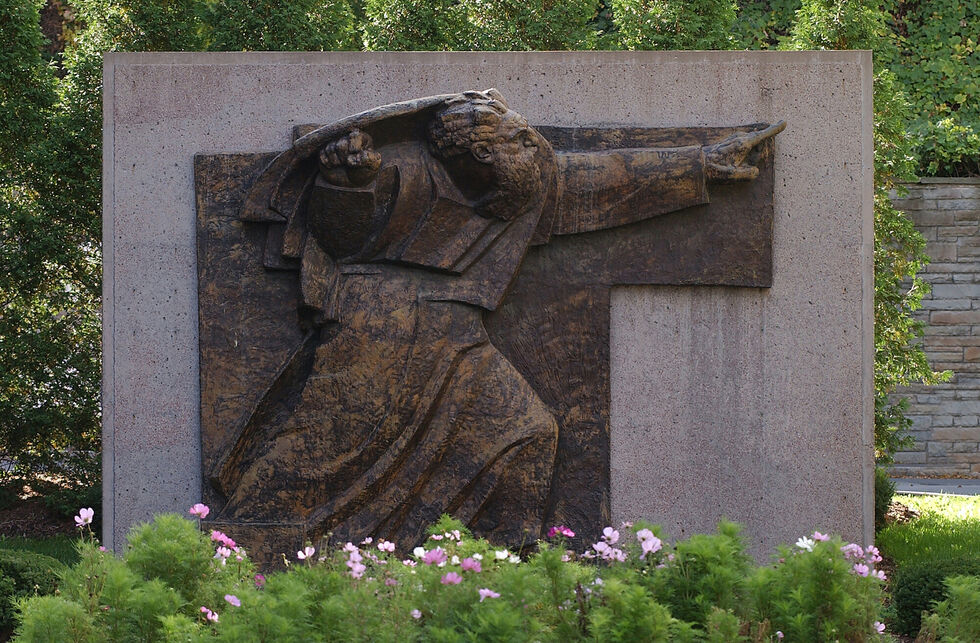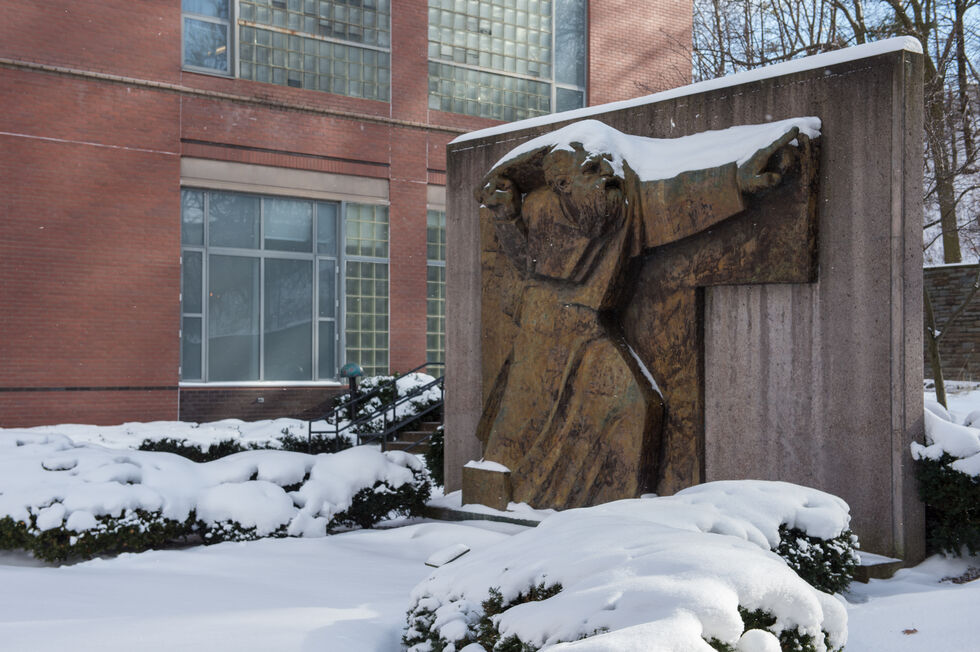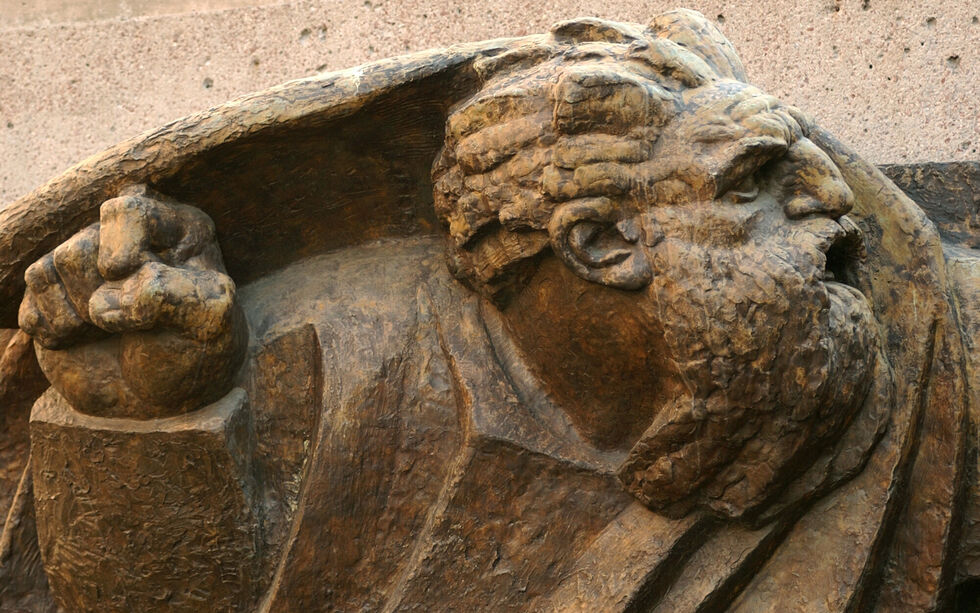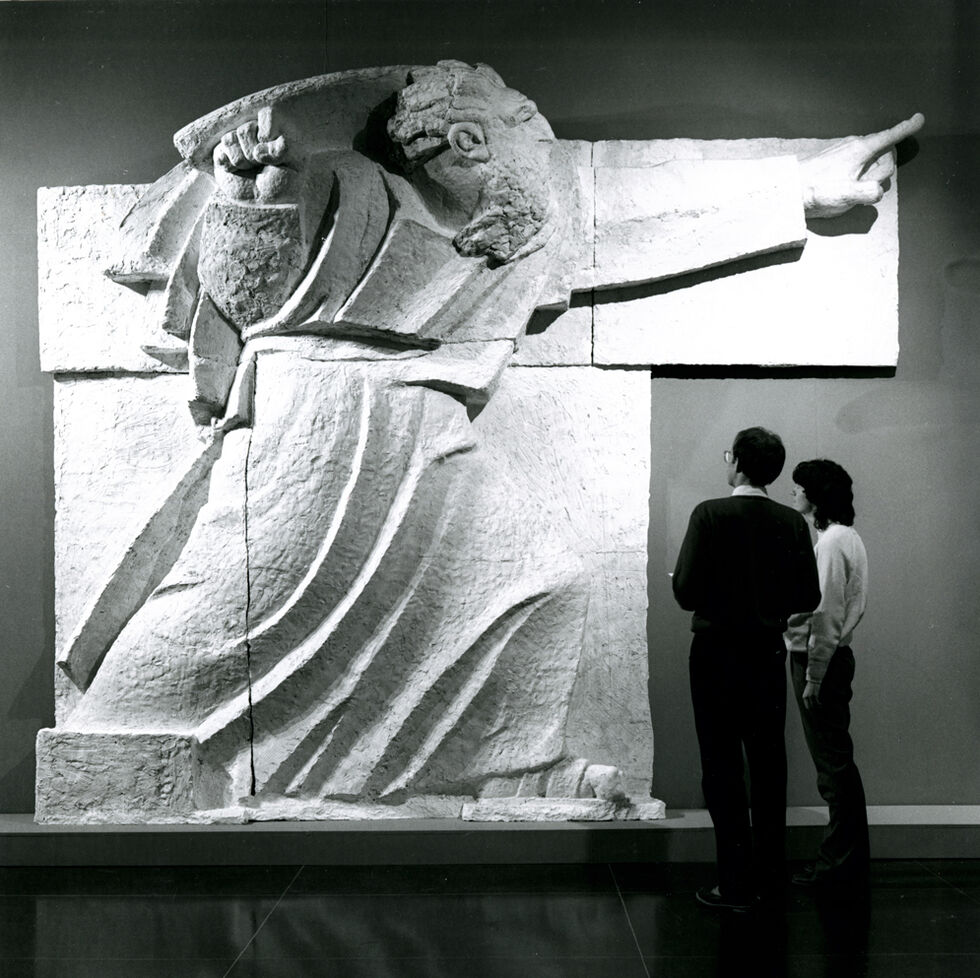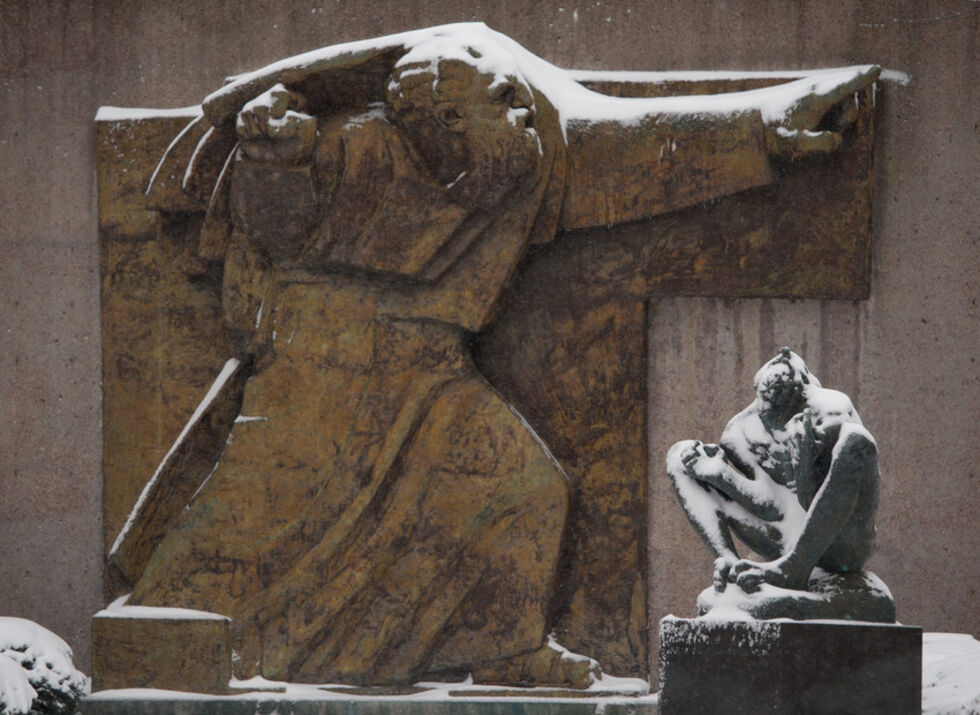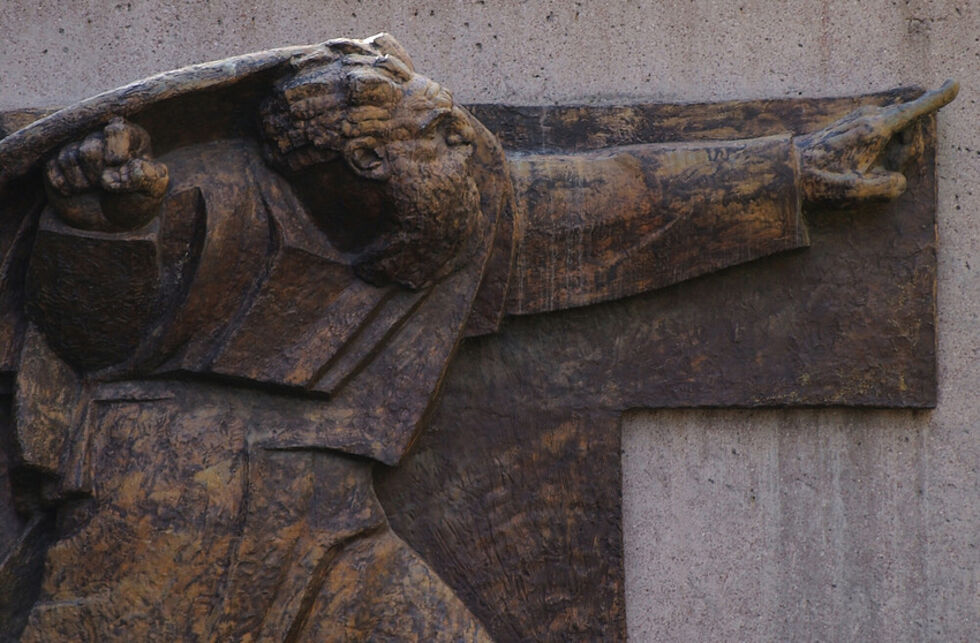Moses (Sculpture Court)
"Moses" by Ivan Meštrović , 1952 [cast 1991]
Moses is a bronze sculpture by Croatian artist Ivan Meštrović. The sculpture is located in the Mestrovic Sculpture Court. Situated on the northeast side of the Quad between Shaffer Art Building and Bowne Hall, this court features several sculptures by Meštrović, including Job, Moses, and Supplicant Persephone. Moses stands 146 x 188 x 36 inches and is supported by a concrete back. The sculpture depicts the biblical Moses standing steadfast with his raised left arm pointing to the right from the viewer’s position.
Origins:
Moses was intended to be part of a New York City memorial for the millions of Jews killed during World War II. The commission for the memorial asked Meštrović to create the sculptural elements for the memorial. Meštrović intended for the Moses sculpture to be on the left, a group of bas-relief figures in the middle, and the tablets of the law on the right. Moses would be pointing to the right. The memorial would thus suggest that the only way for humanity to avoid war and genocide was through adherence to the moral laws expressed in Moses’ Ten Commandments. The memorial was never completed due to financial difficulties and conflicts with New York City’s Parks Commissioner at the time, Robert Moses. In 1991, Syracuse University had a cast made from Meštrović’s original model with funds provided by Mr. and Mrs. Joseph Spector.
Ivan Meštrović was a Croatian-American sculptor born August 15, 1883 in Vrpolje, Slavonia to poor Croatian parents. At the age of fifteen, Meštrović began an apprenticeship with a master of stonemasonry. In 1889, he was accepted to the Vienna Academy where he remained until 1904. Meštrović was forced to flee Split on the eve of the Austro-Hungarian attack in 1914. Alongside Anton Trumbic and Frano Supilo, he formed the Yugoslav Committee on National Independence in London. Meštrović was also imprisoned by the Gestapo in 1941 due to his political leanings. With assistance from the Vatican, he was released in 1942. Meštrović's early work often portrayed local Croatian legends and his later works often had strong biblical themes. In 1947, Meštrović moved to the US where he secured a sculptor-in-residence with Syracuse University until 1955. During his time at Syracuse he became a US citizen. He then took a position as Professor of Sculpture at University of Notre Dame in South Bend, Iniana. Meštrović had over 50 exhibitions during his lifetime. Some have considered him a modern day Michangelo. He designed his estate in Split, Yugoslavia (now in Croatia) which was donated by him to the people of Croatia and serves as a museum containing over 50 sculptures and multiple drawings of his work to this day. Ivan Meštrović died on January 16, 1962 in South Bend, Indiana.
Burton, R., & Pitoniak, S. (2019). Forever Orange: The Story of Syracuse University. SU Press; Tatham, D. (1997). "Ivan Mestrovic in Syracuse, 1947-1955." The Courier; SU University Archives; "Art on Campus - Moses." SU Art Galleries; "The History of the Institution." Ivan Meštrović Museums. Archived 2013-04-29 at the Wayback Machine; SU Photo and Imaging Center.
